Kalevi Aho | |
|---|---|
 Aho in 2010 | |
| Born | 9 March 1949 Forssa, Finland |
| Occupations |
|
Kalevi Ensio Aho (born 9 March 1949) is a Finnish composer. [1]
Kalevi Aho | |
|---|---|
 Aho in 2010 | |
| Born | 9 March 1949 Forssa, Finland |
| Occupations |
|
Kalevi Ensio Aho (born 9 March 1949) is a Finnish composer. [1]
Aho began his interest in music at the age of ten, when he discovered a mandolin in his home and began to teach himself how to play it. He soon was taken under the tutelage of Martti Loikkanen, the boy's 4th grade teacher and founder of a local youth mandolin ensemble in Forssa. After learning how to read sheet music, Aho immediately started composing. [2] Aho progressed so fast on the instrument that Loikkanen suggested he study the violin as well, with Loikkanen giving him private lessons. Aho also began to learn violin at an incredible speed, with him later recalling, "Martti taught me at home for free until I started skipping him out of my playing skills and he suggested changing teachers." [3] Aho's parents were quite supportive of his musical hobby, encouraging him to compose and giving him a piano at the age of 15. [3]
He moved from the city of Forssa to Helsinki in September 1968 to study at the Sibelius Academy. He studied composition at the Sibelius Academy under Einojuhani Rautavaara, beginning that year and receiving a diploma in 1971. He continued his studies for a year in Berlin with Boris Blacher. His teaching positions include music theory at the University of Helsinki from 1974 to 1988, and a professorship at the Sibelius Academy from 1988 to 1993. He was named composer-in-residence for the Lahti Symphony Orchestra in 1992, and conductor Osmo Vänskä has recorded many of his recent large-scale works with the orchestra. Aho has worked as a freelance composer, with a state scholarship, since 1993. He lives in Helsinki.
Known principally as a composer of large-scale works, as of 2021 [update] Aho has composed eighteen symphonies, [4] thirty-seven concertos, five operas and several vocal works. His chamber music includes several quintets, quartets, sonatas and solo works. He first came to fame with his first symphony (1969) and second string quartet (1970).
His works of this time showed such neo-classical traits as a preoccupation with counterpoint (particularly fugues), and stylized renderings of older forms, such as the waltz. In the following decade he wrote in modernist and post-modernist styles. His use of irony and juxtaposition of contrasting moods and musical styles and genres has been compared to Gustav Mahler and Alfred Schnittke. [5]

Jean Sibelius was a Finnish composer of the late Romantic and early-modern periods. He is widely regarded as his country's greatest composer, and his music is often credited with having helped Finland develop a stronger national identity when his country was struggling from several attempts of Russification in the late 19th century.

Einojuhani Rautavaara was a Finnish composer of classical music. Among the most notable Finnish composers since Jean Sibelius (1865–1957), Rautavaara wrote a great number of works spanning various styles. These include eight symphonies, nine operas and twelve concertos, as well as numerous vocal and chamber works. Having written early works using 12-tone serial techniques, his later music may be described as neo-romantic and mystical. His major works include his first piano concerto (1969), Cantus Arcticus (1972) and his seventh symphony, Angel of Light (1994).

Paavo Allan Engelbert Berglund was a Finnish conductor and violinist.

The Sibelius Academy is part of the University of the Arts Helsinki and a university-level music school which operates in Helsinki and Kuopio, Finland. It also has an adult education centre in Järvenpää and a training centre in Seinäjoki. The Academy is the only music university in Finland. It is among the biggest European music universities with roughly 1,400 enrolled students.
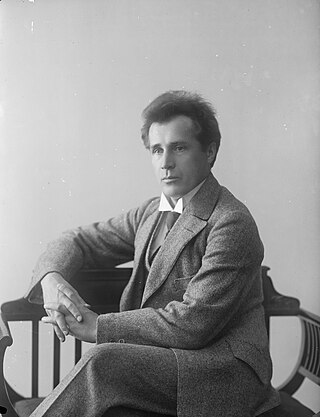
Leevi Antti Madetoja was a Finnish composer, music critic, conductor, and teacher of the late-Romantic and early-modern periods. He is widely recognized as one of the most significant Finnish contemporaries of Jean Sibelius, under whom he studied privately from 1908 to 1910.

Leif Selim Segerstam is a Finnish conductor, composer, violinist, violist and pianist, especially known for writing 354 symphonies, along with other works in his extensive oeuvre.

Joonas Kokkonen was a Finnish composer. He was one of the most internationally famous Finnish composers of the 20th century after Sibelius; his opera The Last Temptations has received over 500 performances worldwide, and is considered by many to be Finland's most distinguished national opera.

Aulis Heikki Sallinen is a Finnish contemporary classical music composer. His music has been variously described as "remorselessly harsh", a "beautifully crafted amalgam of several 20th-century styles", and "neo-romantic". Sallinen studied at the Sibelius Academy, where his teachers included Joonas Kokkonen. He has had works commissioned by the Kronos Quartet, and has also written seven operas, eight symphonies, concertos for violin, cello, flute, horn, and English horn, as well as several chamber works. He won the Nordic Council Music Prize in 1978 for his opera Ratsumies.
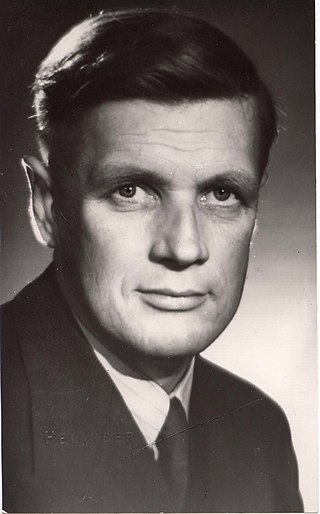
Uuno (Kalervo) Klami was a Finnish composer of the modern period. He is widely recognized as one of the most significant Finnish composers to emerge from the generation that followed Jean Sibelius.
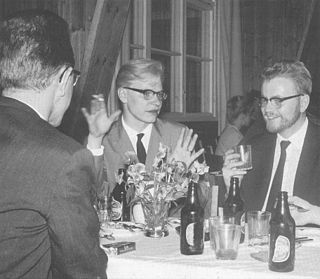
Erkki Olavi Salmenhaara was a Finnish composer and musicologist.

Sven Einar Englund was a Finnish composer.

Karelia Suite, Op. 11 is a subset of pieces from the longer Karelia Music written by Jean Sibelius in 1893 for the Viipuri Students' Association and premiered, with Sibelius conducting, at the Imperial Alexander University in Helsinki, Grand Duchy of Finland, on 23 November of that year. Sibelius first conducted the shorter Suite ten days later; it remains one of his most popular works.

Robert Kajanus was a Finnish conductor, composer, and teacher. In 1882, he founded the Helsinki Orchestral Society, Finland's first professional orchestra. As a conductor, he was also a notable champion and interpreter of the music of Jean Sibelius.

Pekka Kuusisto is a Finnish musician.
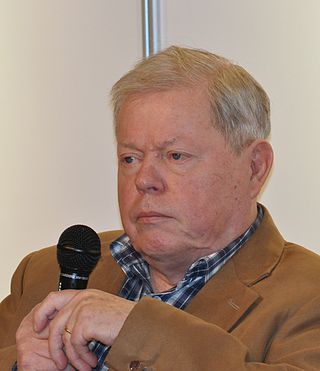
Ilkka Taneli Kuusisto is a Finnish opera composer, conductor, choirmaster and organist.
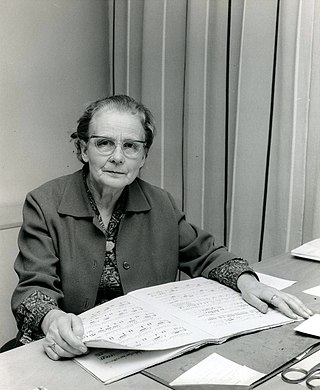
Helvi Lemmikki Leiviskä was a Finnish composer, writer, music educator, and librarian at the Sibelius Academy.
Markus Simon Fagerudd is a Finnish composer.
Lotta Annukka Wennäkoski is a Finnish composer.
Jaakko Ilkka Kuusisto was a Finnish violinist, composer, and conductor.